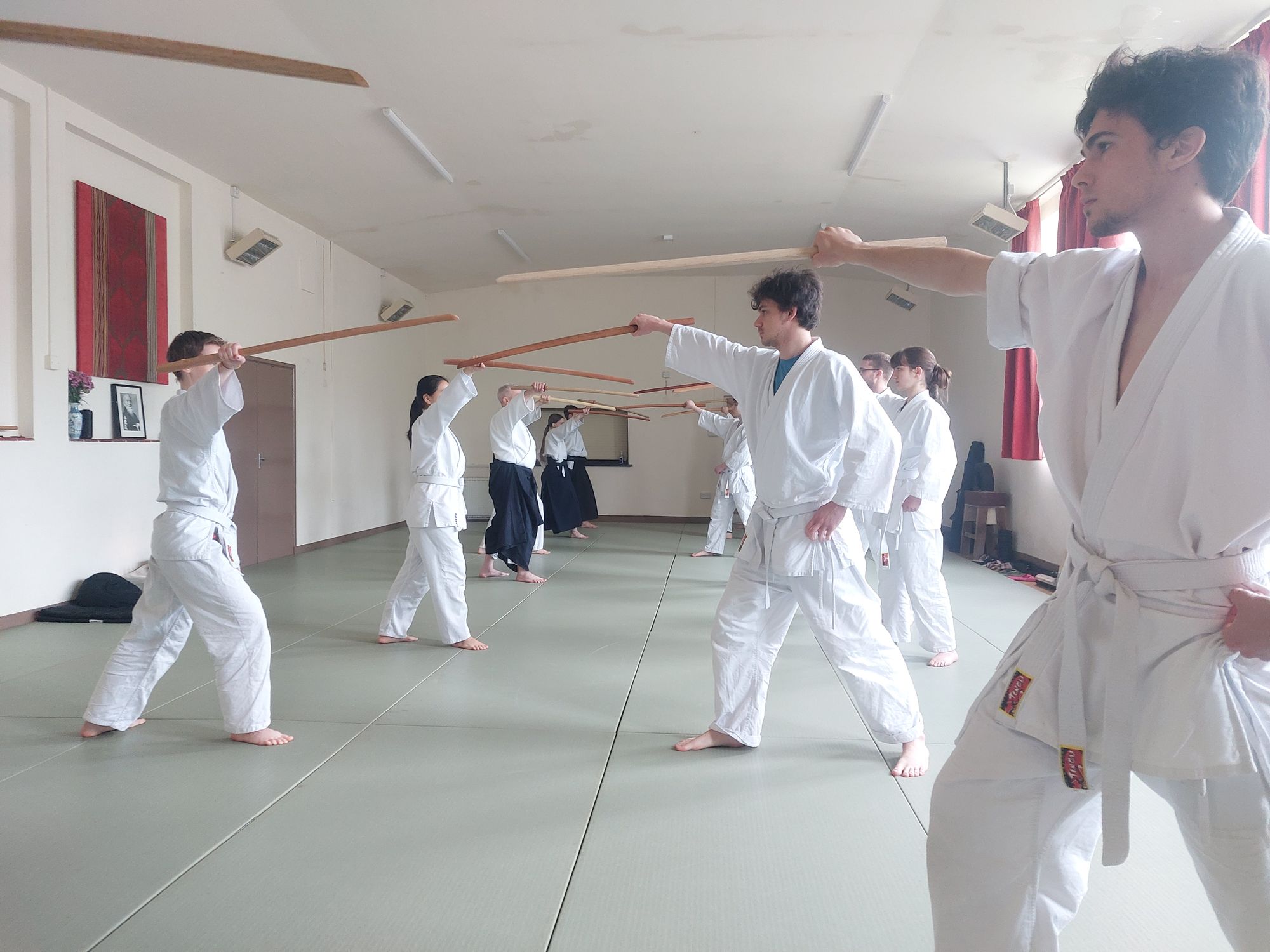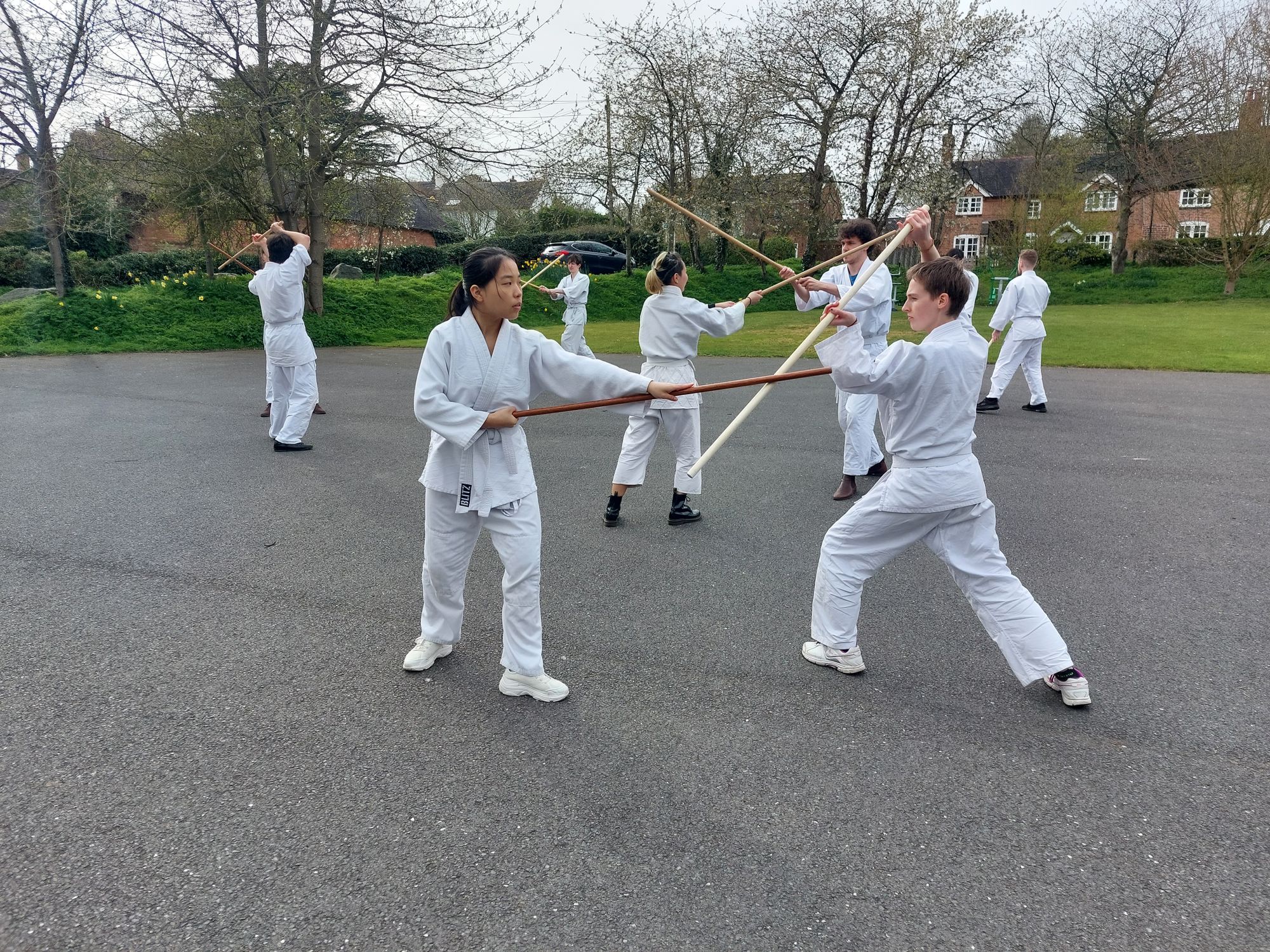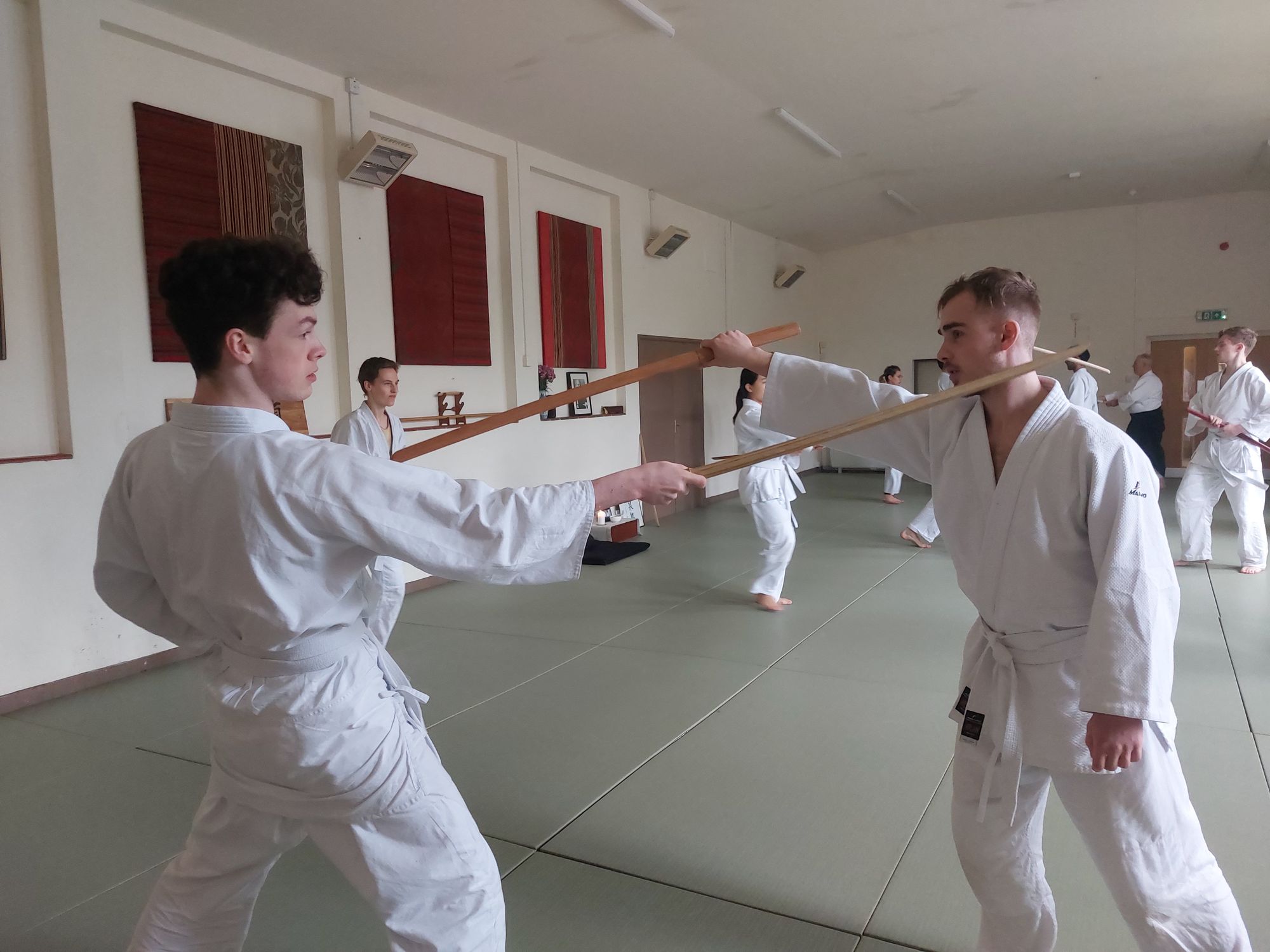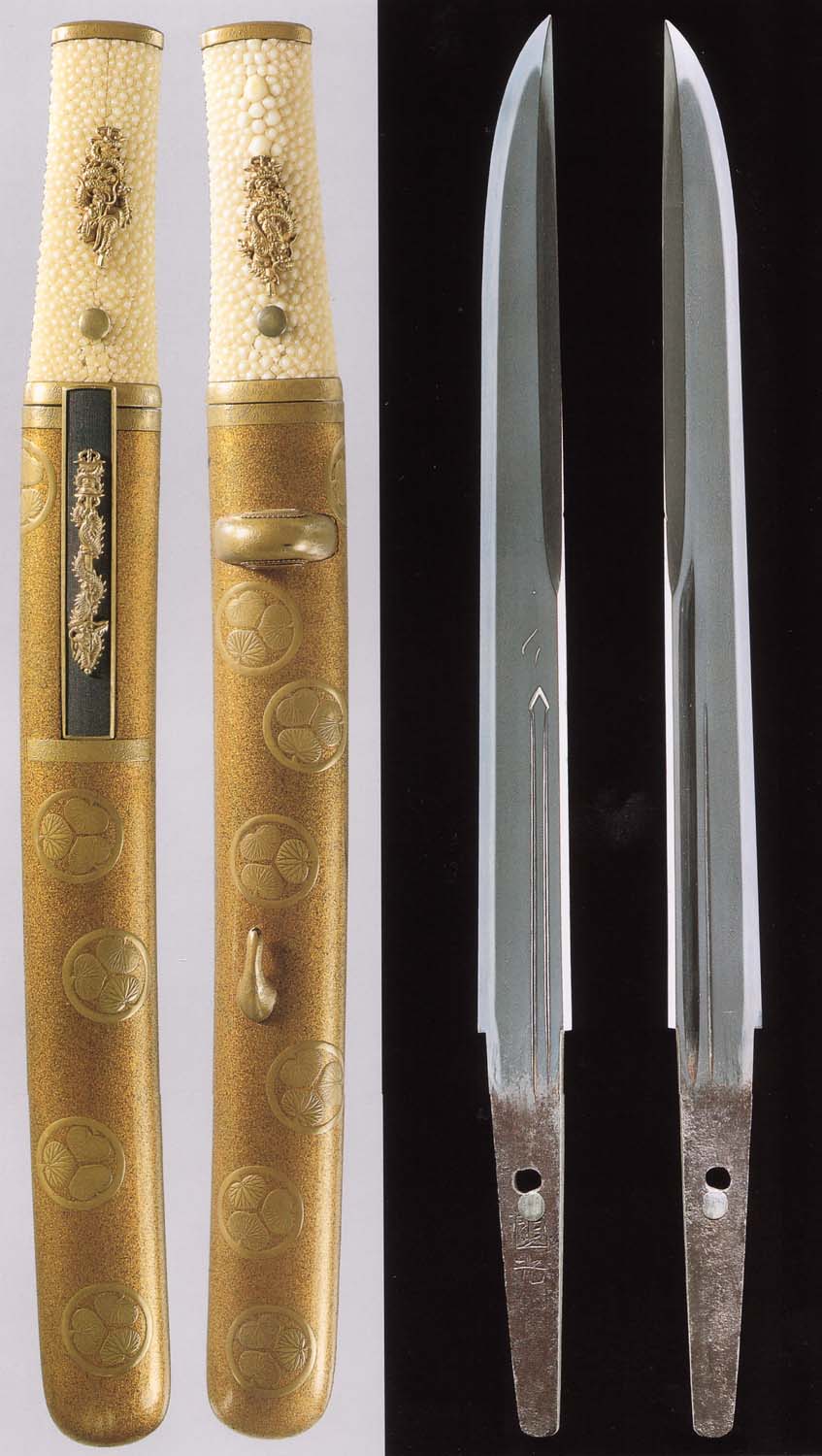Introduction to Weapons

With the upcoming Weapons Seminar being held on 4th June at Warwick Sport Centre, here is a short guide to the weapons used in Aikido. Beginners will be provided with equipment for use in sessions courtesy of the club.
Most beginners are introduced to Aikido through body art, however, weapons art is an equally important part of training. Many aikido movements are derived from weapons arts; practising with weapons complements techniques involved in training without weapons. Weapons art gives insight into the origin of these techniques and reinforces concepts relating to body art, such as distance, timing, foot movement, presence and connectedness.
Jo
Aikido founder Morihei Ueshiba (1883-1969), known to Aikido practitioners as Ō-Sensei, was extremely gifted with the jo staff and he developed the art of aiki-jo, which was further refined by his students.

Use of the Jo began sometime between 1608 and 1611 when Samurai Muso Gonnosuke suffered a defeat at the hands of Japan’s greatest swordsman Miyamoto Musashi, who spared his life. Muso meditated on the defeat in the mountains and was inspired by a dream. As a result he designed a staff that was shorter and thinner than any others being used at the time, so that it would be much faster and would allow Gonnosuke to get a lot closer to his opponent.
The shorter Jo was the edge Gonnosuke needed when the two fought a rematch, and Gonnosuke returned the favour and spared Musashi’s life.
Bokken
The bokken is a safe substitute for a real sword and is usually shaped like a katana. The katana was mainly used for the training of warriors and samurai. In Japan, the sword and its artistry go back before the times of written history. The art of aiki-ken was developed by Ō-Sensei and further refined by his students.

Tanto
The tanto is a Japanese short sword or dagger. It was originally designed with a single-edged blade and curved shape, used primarily for piercing but also was used for slashing. The samurai usually wore the tanto as a secondary weapon as it was especially effective in close-quarters combat. Women sometimes carried a tanto for self-defence. In class, we use wooden tanto as an aid for practising some body art techniques.
